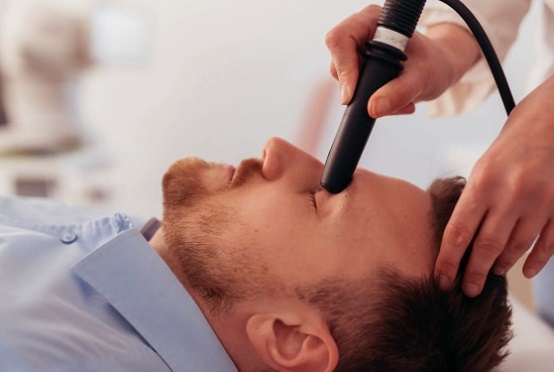Nikhil Prasad Fact checked by:Thailand Medical News Team Jan 16, 2025 2 months, 4 weeks, 8 hours, 58 minutes ago
Medical News: A groundbreaking study has highlighted the effectiveness of high-intensity focused ultrasound cycloplasty (UCP) as a treatment for acute angle-closure glaucoma (AACG), offering a ray of hope to patients worldwide. This research was conducted by a collaborative team from the Department of Ophthalmology at the Third Affiliated Hospital of Chongqing Medical University and Chongqing Aier Eye Hospital in China. Their findings provide an innovative solution for managing this serious condition, which can lead to blindness if not promptly treated.
 New Hope for Glaucoma Patients Using Ultrasound Cycloplasty
New Hope for Glaucoma Patients Using Ultrasound Cycloplasty
Acute angle-closure glaucoma is characterized by a rapid rise in intraocular pressure (IOP) due to a sudden blockage in the anterior chamber angle. This condition is an ophthalmic emergency that requires immediate treatment to reduce IOP, control inflammation, and reopen the blocked chamber angle.
Conventional methods like medications, laser procedures, or invasive surgeries often fall short, especially in patients with persistent high IOP or those at risk of complications. This
Medical News report dives into the study that proposes UCP as a safer and effective alternative.
Understanding UCP and Its Mechanism
UCP employs high-intensity focused ultrasound to target the ciliary body, reducing IOP by partially destroying the ciliary epithelium and limiting aqueous humor production. Unlike transscleral cyclophotocoagulation, UCP has a milder postoperative reaction, making it a less invasive choice. Previously, UCP has been used successfully to treat open-angle glaucoma, but this study is among the first to explore its application in AACG.
Study Parameters and Methods
The study included 16 patients, comprising 10 women and 6 men, with AACG who had not responded to conventional treatments. Their IOP remained at or above 35 mmHg despite maximum doses of medication and anterior chamber paracentesis. Patients were in poor systemic and ocular health, precluding invasive surgeries like phacoemulsification or trabeculectomy.
All patients underwent UCP using a device called EyeOP1 from EyeTechCare in France. The number of ultrasound sectors activated (either 8 or 10) was determined based on preoperative IOP levels. A comprehensive set of preoperative examinations, including IOP measurement, corneal endothelial cell density assessment, and ultrasound biomicroscopy, was conducted. Postoperative follow-ups were scheduled on days 1, 7, and months 1 and 3 to evaluate the outcomes.
Key Findings
The study revealed remarkable results:
-Reduction in IOP: The mean preoperative IOP was 52.31 mmHg. After UCP, it significantly decreased to 13.00 mmHg on day 1, 10.25 mmHg in week 1, and stabilized below 15 mmHg by month 3.
-Improvement in Anterior Chamber Depth (ACD): The mean ACD increased from 1.41 mm preoperatively to 1.72 mm on day 1, remaining significantly higher throug
hout the study period.
-Reduction in Lens Zonule Length (LZL): In all quadrants, the mean LZL was shorter on days 1 and 7 and month 1 compared to preoperative measurements, suggesting changes in ciliary muscle and lens positioning.
-Changes in Ciliary Muscle Thickness (CMT): The superior, inferior, and nasal quadrants exhibited a temporary increase in CMT after the procedure, attributed to the thermal effects of ultrasound.
-Minimal Complications: Common postoperative issues like subconjunctival hemorrhage and conjunctival congestion resolved within a month. Importantly, no serious complications like eyeball atrophy or hyphema were reported.
Conclusions and Implications
The study provides compelling evidence that UCP is not only effective in lowering IOP but also offers a unique mechanism of action. By deepening the anterior chamber and reopening non-adhesive closed angles, UCP addresses the root cause of high IOP in AACG. The technique’s non-invasive nature and minimal complications make it a viable option for patients unable to undergo traditional surgeries.
These findings pave the way for further research, as larger sample sizes are needed to confirm the long-term efficacy and safety of UCP. Additionally, understanding the intricate changes in ciliary muscle and lens dynamics could lead to even more refined treatments for glaucoma.
The study findings were published on a preprint sever and are currently being peer reviewed.
https://www.researchsquare.com/article/rs-5675275/v1
For the latest Glaucoma News, keep on logging to Thailand
Medical News.
Read Also:
https://www.thailandmedical.news/news/glaucoma-news-study-show-that-long-term-statin-use-increases-risk-of-onset-and-progression-of-glaucoma
https://www.thailandmedical.news/news/glaucoma-news-texas-study-alarmingly-finds-that-glucocorticoids-and-steroids-can-cause-glaucoma-and-also-accelerate-glaucoma-progression
https://www.thailandmedical.news/news/canadian-study-finds-that-most-present-drugs-used-for-glaucoma-treatments-can-cause-adverse-issues
https://www.thailandmedical.news/articles/glaucoma-news
